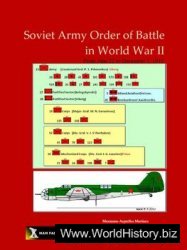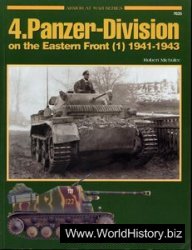Evidence of Celtic horsemanship and the use of the horse in battle comes from iconography and, above all, from the comments of classical writers, of whom Caesar is our most informative source
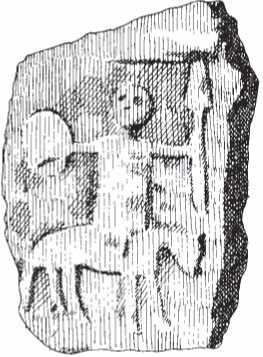
Figure 4.8 Romano-Celtic stone relief of a mounted warrior, Margidunum, Nottinghamshire. Maximum width: c.10cm. Paul Jenkins.
(pp. 77-9). Strabo61 echoes the sentiments of many authors in his remark that the Gauls and the Germans excelled in cavalry and that the best Roman horse was recruited from them. It is highly probable that Celtic horsemen (like those of Numidia and Spain - both also noted for their cavalry) had ridden from childhood. It was in 390 BC that the Romans first encountered Celtic cavalry, when they were faced by invasion from the area of the Po Valley and Rome was sacked by a huge Celtic army with thousands of horsemen. In 218 BC the Carthaginian Hannibal, invading Italy, had a large cavalry force which was composed of Spanish, Celtic and North African horse. We are told that the Celts fought in the Hannibalic wars as mercenaries, for whichever side (Roman or Carthaginian) offered the best pay and prospects at any given time. At the Battle of Cannae (a disastrous defeat for the Romans), the Phoenicians won, although they were inferior in numbers, because of the superb quality of their cavalry.62
The deployment of cavalry can be extremely effective, but its use is constrained by a number of factors. Because of the varying seasonal availability of forage, cavalry naturally operate best in the period of late spring to late autumn. However, forage alone is not sufficient; a supply of corn is also needed.63 A second important factor concerns the choice and training of the horses. Animals would be selected for their character and temperament: they must have high spirits but not be too individualistic; they must be amenable to training and obedient. Cavalry horses would be trained not to react to the smell of
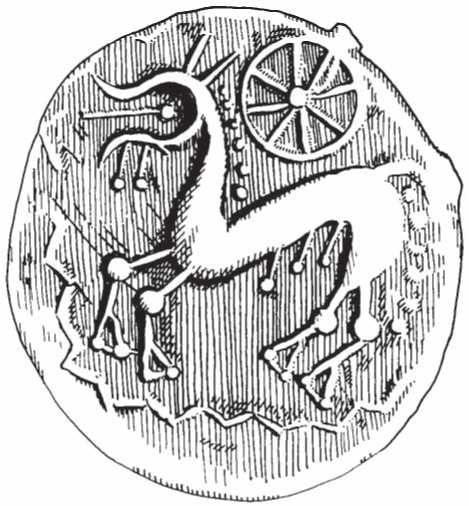
Figure 4.9 Celtic silver coin decorated with triple-phallused horse and solar wheel, Bratislava, Czechoslovakia. Paul Jenkins.
Blood or to noise, and to manage the crossing of both rivers and rough ground.64 Tacitus recounts the fate of a Roman officer Aulus Atticus, at the battle between the Roman forces and the Caledonian Celts at Mons Graupius in AD 84. Atticus's horse panicked and bolted straight into the enemy lines.65 Ann Hyland speaks of the danger of a frightened rider transmitting his fear to his mount.66
Methods and use of cavalry forces
The Celts used cavalry units in a number of ways: they could act as advance or reconnoitring troops; they guarded marching columns; they challenged and taunted; they ambushed foraging Romans; they cut off supplies; and in pitched battles, they harried and outflanked. A favourite method of fighting was to charge, hurl javelins and then dismount to fight hand to hand. Cavalry operate best in open country: Tacitus describes Celtic cavalry tactics in wooded areas of Britain, where troops dismounted and led their horses until the trees thinned.67 There is conflicting testimony as to how much actual fighting was done on horseback. Polybius68 states that Iberian and Celtic cavalry were not really a coherent squadron of horse, but merely mounted warriors who dismounted once they arrived on the battlefield. But this is not borne out by other writers who describe cavalry charges; and iconography does depict horsemen actually fighting from their horses.
There are several instances where Julius Caesar69 alludes to the Britons' use of cavalry and chariots together for mutual support. Chiefs and nobles gradually abandoned chariots for horseback, as their skills increased, except for Britain, where chariots were retained long after they became obsolete in Gaul. Caesar speaks in detail of cavalry tactics in Britain, Gaul and Germany. In Britain, mounted forces were used to harry the Romans as they landed from their boats in shallow water.70 He recounts how British cavalry charged the Romans while they were offguard, fortifying their camp.71 The Roman general complained that the Britons fought in scattered groups rather than closely knit units, with reserves posted at intervals so that the various sections could cover one another's retreat and with fresh troops to replace tired soldiers.
Vercingetorix used his cavalry to cut off the Romans' supply lines and prevent them from foraging.72 While the Romans were building siege-works against the fortifications of Vercingetorix's stronghold at Alesia,73 they were continually harassed by Gaulish cavalry. An interesting tactic used by the Arvernian leader more than once was his deployment of cavalry and light infantry as mixed units.74
Caesar describes a particular form of cavalry-fighting in which his German adversaries were trained:75 horsemen went into battle supported by an equal number of infantry, each foot-soldier having been carefully selected by the cavalryman for his personal protection. In any crisis, the infantry surrounded an injured, fallen horseman and guarded him. These unmounted warriors were able to keep up with rapid advances or retreat of horse by running alongside, clinging to the horses' manes. In addition, German cavalrymen trained their horses to stay in one spot once they had dismounted, in order that they could be swiftly reunited with their mounts when necessary.76
Another method of fighting on horseback is described by Pausanias77 in his account of the Celtic invasion of Greece in the early third century BC. He alludes to something called the trimarcasia, saying that marca was a Celtic word for horse. The trimarcasia consisted of a group of horsemen, composed of a nobleman and his two grooms. The servants stayed behind the army ranks, ready to supply their master with a fresh horse should his be injured. If the lord were himself killed or wounded, one groom replaced him in the cavalry action, while the other took him back to camp if he were still alive. The idea of the trimarcasia was thus to maintain the original number of horsemen in an engagement.78
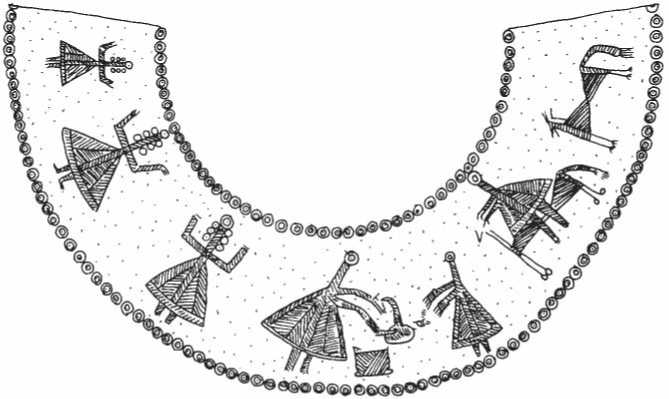
Figure 4.10 Incised decoration on a pottery vessel, depicting horseman, seventh century BC, Sopron, Hungary. Maximum diameter of vessel: 63.2cm.
Paul Jenkins.
Caesar himself was a superb horseman, who clearly understood the potential of cavalry. He not only utilized Gallic horsemen for his own troops, but he was keenly interested in the Gauls' use of cavalry against the Romans, and in his Gallic Wars he chronicles its importance over and over again. He comments, for instance,79 that some tribes, like the Nervii, had virtually no cavalry, but that the Sontiates of Aquitaine80 and the Aedui81 were very strong in their horse regiments. The German and British cavalry also greatly impressed him.82 Caesar discusses at length the role played by the Gallic cavalry in the war between himself and Vercingetorix, the Arvernian leader of the great uprising against the Romans in 52 BC. Vercingetorix had paid particular attention to cavalry provision when preparing for rebellion.83 For the Alesia campaign,84 he ordered the entire cavalry force of 15,000 to assemble at Bibracte, in the territory of the Aedui. Caesar85 was only too well aware of the superiority of Gaulish horsemen. As an example of courage and brash confidence, the Roman general describes an oath sworn by Gaulish cavalry officers86 that any one of their number who did not ride twice through the Roman marching columns should consider himself exiled and would never see home and family again. But Vercingetorix87 was deeply concerned by the terrible losses being inflicted on his horse regiments and at one point he sent all the mounted forces away from Alesia into safety, under cover of night. At the final attempt of Vercingetorix's forces to relieve the besieged
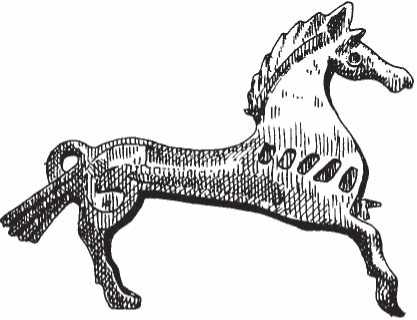
Figure 4.11 Romano-Celtic bronze brooch in the form of a horse, York.
Stronghold, the Arvernian chief's army consisted of 240,000 infantry and 8,000 horse.88
The Romans' use of Celtic cavalry
The Romans themselves never fully developed their own cavalry arm: instead, they recruited regiments of horse from those of their provinces which possessed a strong indigenous tradition of cavalry fighting, most particularly Numidia, Spain, Germany and, above all, from Gaul. Gallic cavalry was renowned throughout the empire for its superb horsemanship: Strabo's comments about its excellence have already been noted.89 In Gaul, the regions which provided the most cavalry included Narbonensis, Belgica and Lugdunensis.90 Caesar says that he raised his horse mainly from Narbonensis and from the Burgundian Aedui.91 By AD 70 British horse were being recruited as well. In the Roman army, native cavalrymen were generally levied with their own mounts. Up to the Flavian period (later first century AD), many Roman auxiliary cavalry units were raised as a national troop which was then posted abroad, thus retaining its integrity as an ethnic unit. However, in time of war, replacements had of necessity to be levied on the spot, thus diluting the unit's ethnicity.92 But the Romans had to exercise caution in transferring cavalry around the empire: moving horses from hot to cold regions works reasonably well, but horses adjust badly to increased heat and so care would have been taken not to move - say - Gallic or British horse to the east.
Caesar repeatedly describes his own use of Gaulish and German cavalry whom he greatly admired. On one occasion, he recounts how he ordered
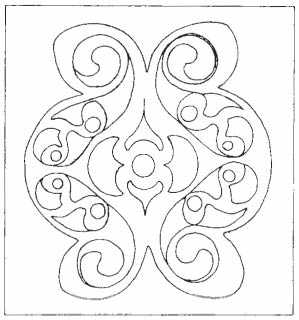
Figure 4.12 Bronze harness-mount inlaid with red enamel, first century AD, Santon Downham, Norfolk. Height: 7.9cm. Miranda Green.
The Gauls to provide him with cavalry to use against the Germans.93 He speaks of another campaign in which he engaged a Gallic horseman to take a letter through the enemy (Gallic) lines to his general Cicero.94 In the revolt led by Vercingetorix, Caesar used German horse as reinforcements, perhaps because nearly all of Gaul was hostile to him.95




 World History
World History


